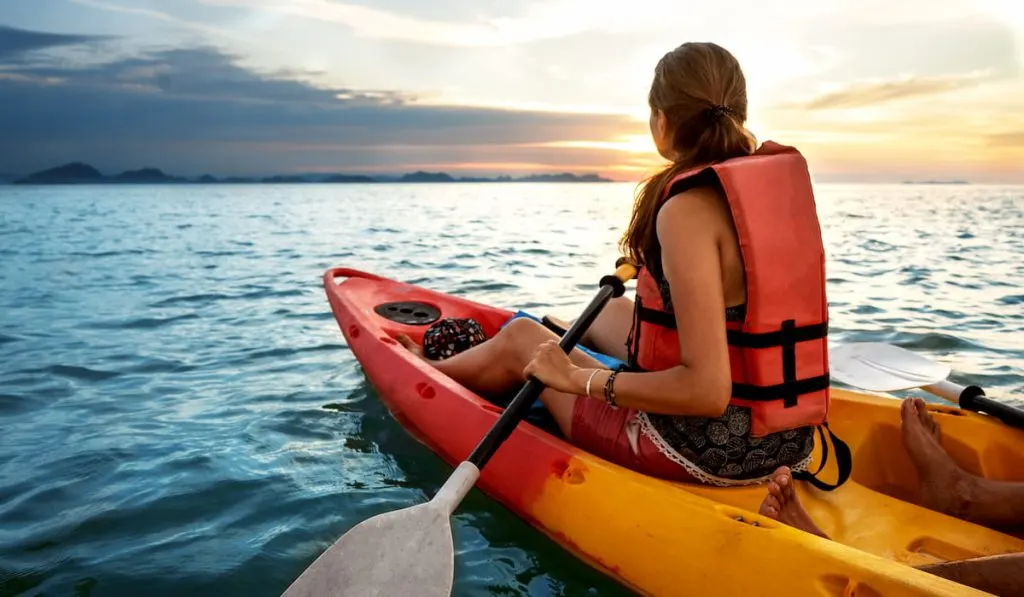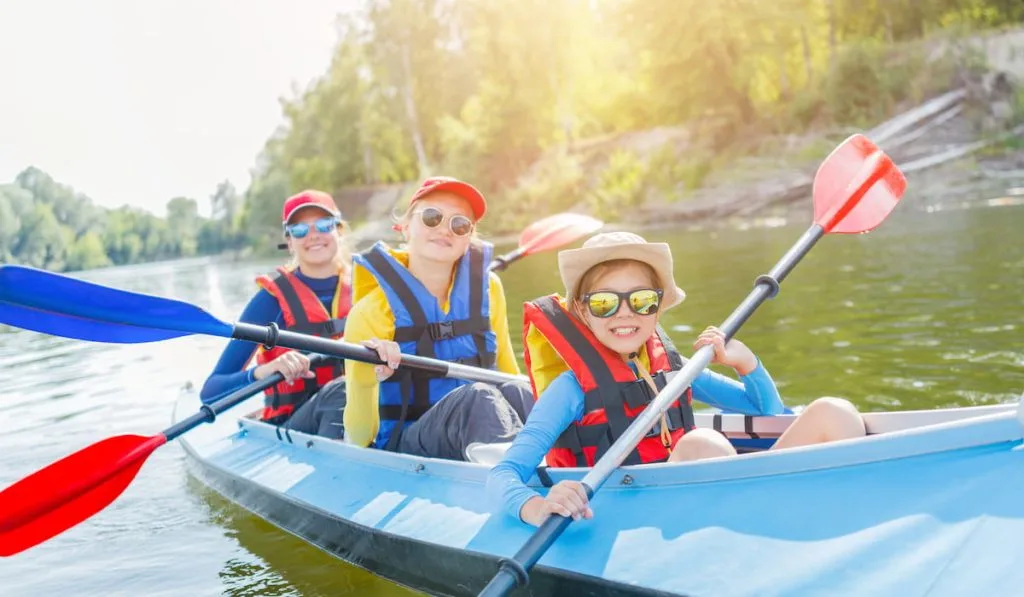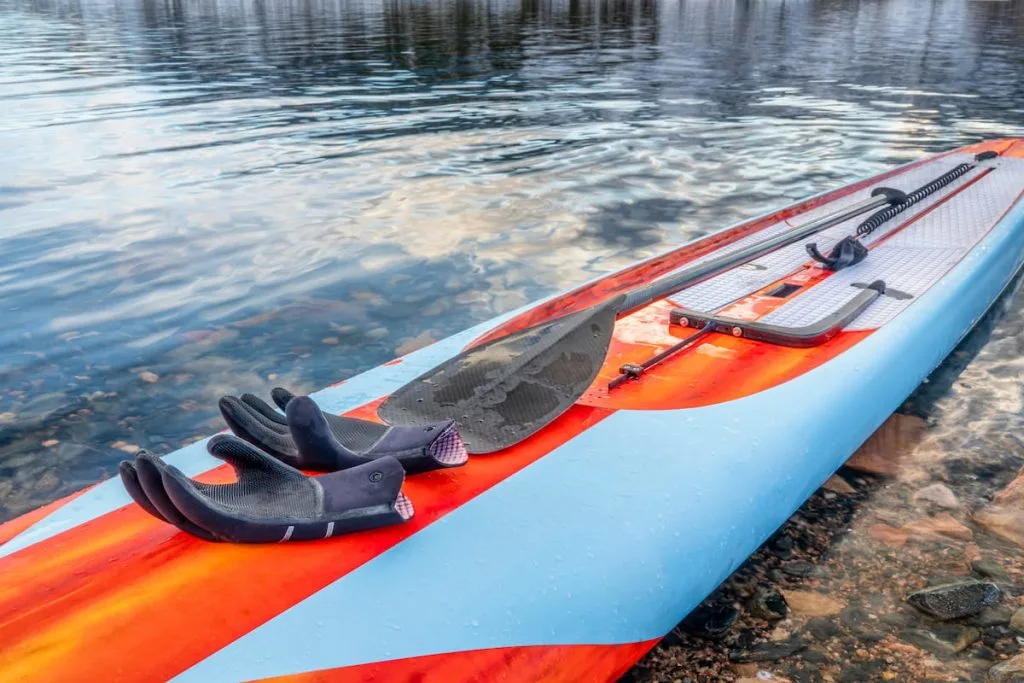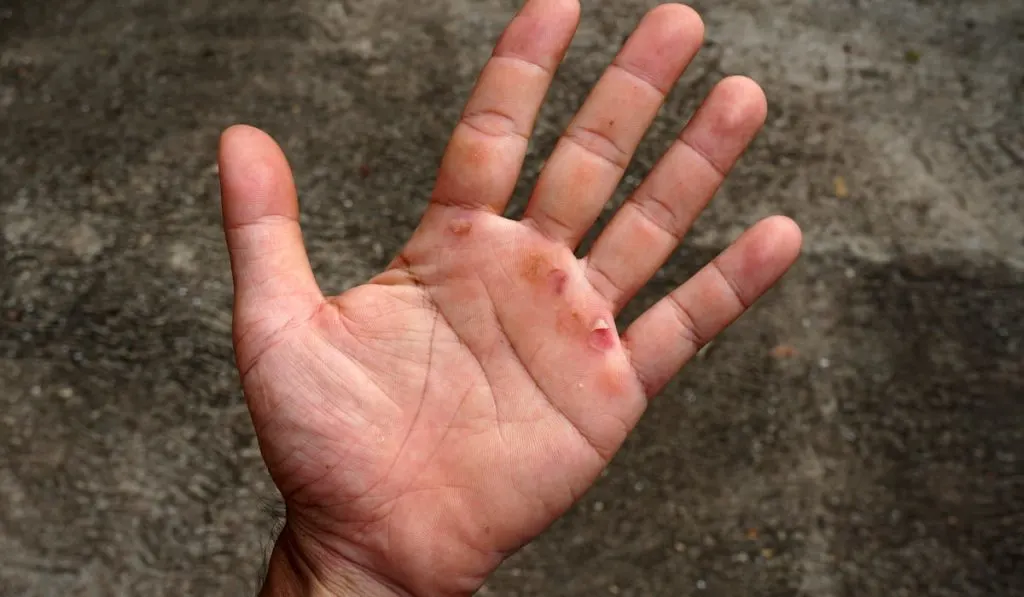Blisters are a common problem for kayakers, especially for those that paddle long distances or in rough conditions.
You might get them on your hands or feet, but they can affect any part of the body you might be using to grip something. Blisters are the result of rubbing together an inner layer of skin with a layer of fluid. The fluid is usually water but can also be sweat or blood.
You will usually know when you have got a blister because it feels like your skin is burning. Blisters can cause a lot of pain and make it very difficult to paddle. If you get them on your feet, it can be really hard to stand up and walk!
One of the most common causes of blisters is paddling in wet conditions. A soggy paddle can make your hands slip, or you might sweat so much that you’re unable to grip it.
Blisters can be the result of poorly fitted paddling gear.

What also causes blisters when kayaking is damp clothing and excess moisture from sweat. This causes blisters to occur on your hips, bum, lower back, heels, armpits, and knees.
Paddles, for instance, should be the right length and shaped for your body size. If you paddle with a paddle that’s too long or too short, it can make you slip and result in blisters.
Blisters can occur because of poor technique. When you’re paddling, your feet should be pointing forward, not sideways. That helps keep them from getting wet.
Here are some other ways you can prevent blisters from forming to enjoy kayaking.
Preventing Blisters When Kayaking
Sunhat/Cap

There are few things you can do to prevent getting blisters when kayaking.
The first thing you should ensure is to wear a sun hat or cap. This will prevent your skin from getting burned in the first place. Sunburns also form blisters, and when you protect your skin from the sun, blisters will be less likely to appear in the first place.
Neoprene Gloves

Another thing you can do is wear neoprene gloves when kayaking. These are tight-fitting gloves that fit tightly to your hands so you can paddle without giving your hands a chance to get burned.
They are beneficial for people who have sensitive skin or for those that paddle in hot conditions because it will cool their hands down and not leave them exposed to the sun.
Neoprene gloves come in many different sizes and colors, but you can also buy gloves that cover your lower arms as well as your hands if you need more protection.
Choose gloves that fit snuggly without leaving seams on areas of friction. Proper fitting gloves will keep your hands warm and not soaking wet. Thin nylon gloves allow you to grip the paddle easily without losing any dexterity.
Neoprene gloves are lightweight and give you the flexibility that nylon alone doesn’t offer. Gloves with open fingers will provide you with maximum grip but less protection than other types of gloves, so it’s up to you to choose what type of glove you want.
Reduce Fiction
The first technique to help you prevent blisters is by holding the paddle loosely in both hands. You can do this by enlarging the diameter of your shaft to encourage a loose grip. You can also add a shrink wrap or cork to your paddle shaft.
Training regularly will help you build calluses which help you develop and maintain tougher skin. Fit for longer paddling sessions.
Pre-band
Prebanding blister-prone areas with a skincare pad or durable medical gel pad will significantly protect your skin from forming blisters.
Wear Proper Clothing

Proper clothing will keep moisture away from your skin. A wet suit is an appropriate kayaking clothing that you should wear when you go kayaking and when you are done kayaking, rinse and dry it every few days.
Avoid wearing open-toed shoes when kayaking. This will help protect your feet from getting blisters in the first place. You should also make sure that you are wearing the right kind of socks for your kayaking session.
Dry yourself thoroughly when you get to rest stops. Apply cornstarch, talcum powder, or antiperspirant in your groin area and armpits to reduce moisture build-up that causes blisters.
How To Treat a Blister?
A blister has a clear watery liquid called serum. This liquid leaks from the neighboring tissues as a reaction to the injured skin. The serum provides natural protection for the skin. If you still end up with a blister even after taking all the measures, then you need to take care of it properly.
A blister that is in its first stages shows signs of irritation and will be red. Cover the affected area with non-adhesive padding to protect it. A breathable or waterproof tape will reduce friction, keep pressure off that area, and keep it dry.
A blister with trapped fluid might be too painful to leave it intact, and you may need to drain the fluid. You will need to wash your hands and the affected area because the affected area is prone to infection when the skin is handled in an unclean environment.

Use a sterilized disposable needle to penetrate the blister. You should aim to drain the fluid which is causing the burning sensation when you touch your skin. You should then clean the blister and cover it so when you paddle, your skin does not rub against it and make it worse.
When you’re out on the water, keep your skin dry and moisturized. Apply lotion or cream to your hands, feet and arms, and reapply it every few hours. If you take a hot shower, make sure to dry your skin afterwards.
In Conclusion
Kayaking is an adventure that you can enjoy when you take appropriate measures.
Ensure that you wear appropriate clothing and dry yourself thoroughly when out in the water.
Use protective gloves so that you can protect your skin from forming blisters.
